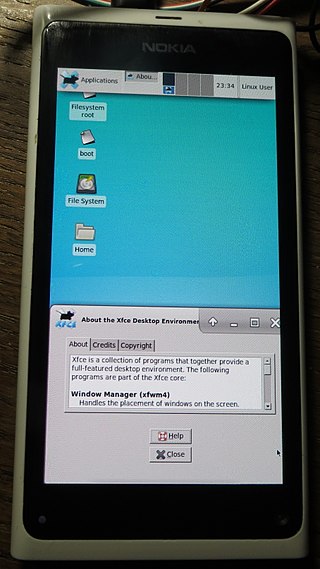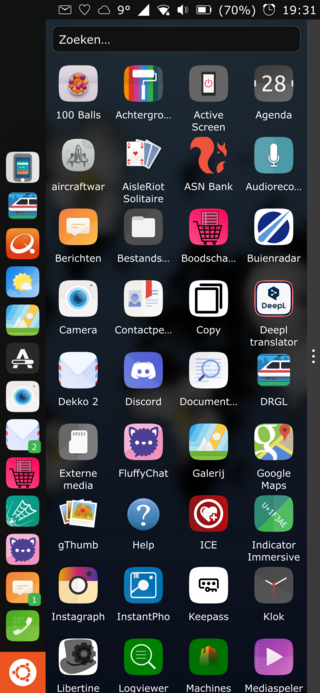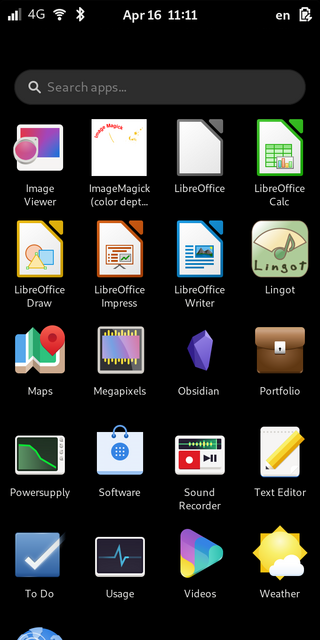A mobile operating system is an operating system used for smartphones, tablets, smartwatches, smartglasses, or other non-laptop personal mobile computing devices. While computers such as typical/mobile laptops are "mobile", the operating systems used on them are generally not considered mobile, as they were originally designed for desktop computers that historically did not have or need specific mobile features. This line distinguishing mobile and other forms has become blurred in recent years, due to the fact that newer devices have become smaller and more mobile unlike hardware of the past. Key notabilities blurring this line are the introduction of tablet computers, light laptops, and the hybridization of the two in 2-in-1 PCs.

The hacking of consumer electronics is a common practice that users perform to customize and modify their devices beyond what is typically possible. This activity has a long history, dating from the days of early computer, programming, and electronics hobbyists.

Ubuntu Touch is a mobile version of the Ubuntu operating system, being developed by the UBports community. Its user interface is written in Qt, and is designed primarily for touchscreen mobile devices such as smartphones and tablet computers, but the original goal of convergence was intended to bring Ubuntu Touch to laptops, desktops, IOT devices and TVs for a complete unified user experience.
Linux for mobile devices, sometimes referred to as mobile Linux, is the usage of Linux-based operating systems on portable devices, whose primary or only Human interface device (HID) is a touchscreen. It mainly comprises smartphones and tablet computers, but also some mobile phones, personal digital assistants (PDAs) portable media players that come with a touchscreen separately.

Briar is an open-source software communication technology, intended to provide secure and resilient peer-to-peer communications with no centralized servers and minimal reliance on external infrastructure. Messages can be transmitted through Bluetooth, Wi-Fi, over the internet via Tor or removable storage, such as USB sticks. All communication is end-to-end encrypted. Relevant content is stored in encrypted form on participating devices. Long-term plans for the project include support for distributed applications such as crisis mapping and collaborative document editing.

The Samsung Galaxy Core Prime is an Android smartphone designed, developed, and marketed by Samsung Electronics. The Galaxy Core Prime features a 4.5 in (110 mm) WVGA display, 4G LTE connectivity and Android Kitkat 4.4.4. Some variants can be upgraded to Lollipop 5.0.2 OS or Lollipop 5.1.1. The 4G version of Samsung Galaxy Core Prime (SM-360FY/DS) was launched on 2 June 2015.

Librem is a line of computers manufactured by Purism, SPC featuring free (libre) software. The laptop line is designed to protect privacy and freedom by providing no non-free (proprietary) software in the operating system or kernel, avoiding the Intel Active Management Technology, and gradually freeing and securing firmware. Librem laptops feature hardware kill switches for the microphone, webcam, Bluetooth and Wi-Fi.
Pine Store Limited, known by its trade name Pine64, is a Hong Kong-based organization that designs, manufactures, and sells single-board computers, notebook computers, as well as smartwatch/smartphones. Its name was inspired by the mathematical constants pi and e with a reference to 64-bit computing power.

AsteroidOS is an open source operating system designed for smartwatches. It is available as a firmware replacement for some Android Wear devices. The motto for the AsteroidOS project is "Free your wrist."

Purism, SPC is an American computer technology corporation based in San Francisco, California and registered in the state of Washington.

The Pinebook is a low-cost notebook developed by Hong Kong-based computer manufacturer Pine64. The Pinebook was announced in November 2016 and production started in April 2017. It is based on the platform of Pine64's existing Pine A64 single board computer, costing US$89 or US$99 for the 11.6" and 14" model respectively. Its appearance resembles the MacBook Air. The Pinebook is sold "at-cost" by Pine64 as a community service.

postmarketOS is an operating system primarily for smartphones, based on the Alpine Linux distribution.

Phosh is a graphical user interface designed for mobile and touch-based devices and developed by Purism. It is the default shell used on several mobile Linux operating systems including PureOS, Mobian, and Fedora Phosh. It is also an option on postmarketOS, Manjaro, and openSUSE.

The Librem 5 is a smartphone manufactured by Purism that is part of their Librem line of products. The phone is designed with the goal of using free software whenever possible, and includes PureOS, a Linux operating system, by default. As of 2021, it is the only smartphone recommended by the Free Software Foundation. Like other Librem products, the Librem 5 focuses on privacy and freedom, and includes features like hardware kill switches, and easily-replaceable components. Its name, with a numerical "5", refers to its screen size, and not a release version. After an announcement on 24 August 2017, the distribution of developer kits and limited pre-release models occurred throughout 2019 and most of 2020. The first mass-production version of the Librem 5 was shipped on 18 November 2020.

The PineTab is a low-cost tablet developed by Hong Kong-based computer manufacturer Pine64. The PineTab was announced in May 2020, with shipping beginning in September 2020. It is based on the platform of the existing Pine A64 single board computer, with the platform being used in related devices, such as the Pinebook and PinePhone.
The scope for this page is that used for list of open-source mobile phones.

Plasma Mobile is a Plasma variant for smartphones. It is currently available for the Pinephone, and supported devices for postmarketOS such as the OnePlus 6.

The PinePhone Pro is a smartphone developed by Hong Kong-based computer manufacturer Pine64. The phone is the successor to the PinePhone released in 2019. The default operating system is Sailfish OS. The device is a developer platform with open hardware specifications but with unfinished software. The target group of the device is free and open-source software developers who will develop the software. The device was first shipped to developers in December 2021, and in February 2022 devices were made available to consumers.

Mobian is a project to port the Debian GNU/Linux distribution running the mainline Linux kernel to smartphones and tablets. The project was announced in 2020. It is available for the PinePhone, PineTab, Librem 5, OnePlus 6/6T and Pocophone F1.




















